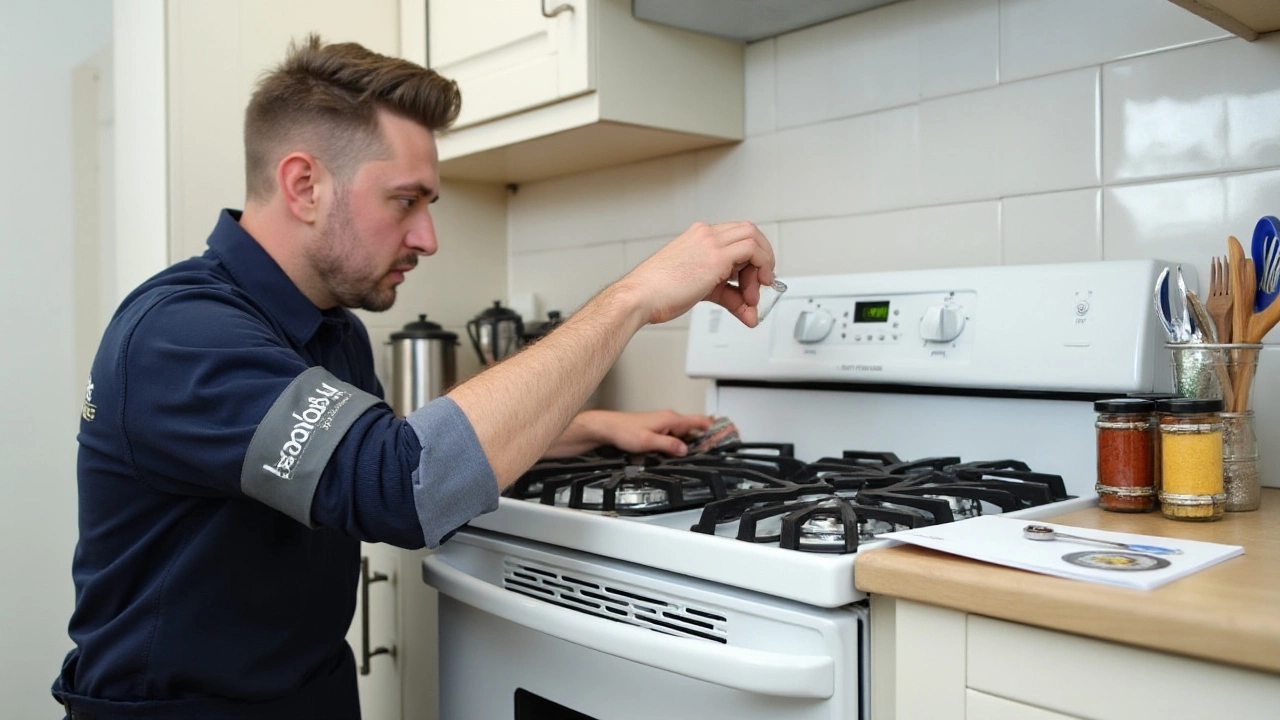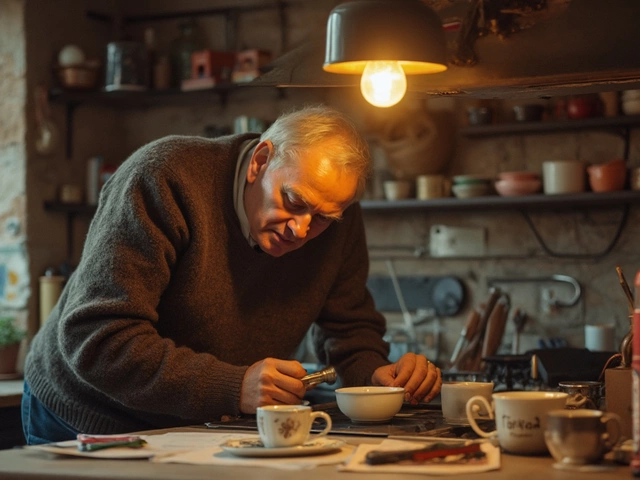The electric stove, a beloved companion in the culinary adventures of many, sits at the heart of many households. For those who enjoy a hot meal, understanding how long these trusty appliances can endure is a topic worth delving into.
In exploring the life expectancy of an electric stove, there's much to consider. From the average number of years you can expect from it to the factors that may shorten or lengthen its service time, this article aims to shed light on all you should know. Beyond just time, we'll cover simple yet effective maintenance practices that can keep your stove running smoothly for years, while also equipping you to make informed decisions should problems arise.
- Electric Stove Overview
- Average Lifespan of Electric Stoves
- Factors Affecting Stove Longevity
- Essential Maintenance Tips
- Signs Your Stove Needs Repair
- When to Consider Replacement
Electric Stove Overview
An electric stove is more than just a kitchen appliance; it's an integral part of modern cooking culture, offering different variations to suit any culinary need. Invented in the early 20th century, electric stoves have evolved significantly over decades, now featuring advanced components that facilitate efficient and user-friendly cooking experiences. At their core, these stoves convert electrical energy into heat, utilizing resistance mechanisms powered by electricity to assist you in cooking foods more precisely and oftentimes safer than traditional gas counterparts.
Among the designs populating kitchens today, coil, smooth top, and induction are the most prevalent types of electric stoves. Each comes with its own set of advantages tailored to various cooking preferences. For instance, coil stoves are quite popular due to their durability, while smooth tops add a sleek aesthetic touch and are easier to clean, pleasing those with a penchant for spotless surfaces. Induction stoves, notable for their energy efficiency, use electromagnetic fields to heat cookware directly, which means the cooking vessel heats up rather than the stove itself. As reported by Consumer Reports, "newer models often come with safety features like indicators and lock controls to prevent mishaps."
For anyone contemplating a purchase or replacement, understanding power ratings is crucial. Electric stoves are typically rated by their wattage, ranging often from 1,000 to 3,500 watts, depending on burner size and capacity. It is vital to ensure that your home’s circuit can handle the load before investing in a unit, thereby avoiding electrical issues. A professional consultation is often advisable for determining compatibility and installation. Plus, knowing the wattage helps in estimating costs, providing a clearer understanding of energy consumption.Stove lifespan and maintenance are key considerations here, as better upkeep naturally extends usability and efficiency. Most electric stoves offer an average lifespan of 13 to 15 years, providing steadfast service with minimal repair needs if well-kept. However, factors like usage frequency and adherence to care instructions can impact this lifespan significantly, leading to either early retirement or a happy extension.
Despite these electrifying advancements, choosing the right electric stove requires more than just technical specifications. Consumer experiences and reviews offer helpful glimpses into daily performance. With evolving culinary needs and environmental considerations, it’s essential to selecting a model that complements not just your cooking style but also your home’s power setup and long-term sustainability goals. As with every significant household appliance, longevity and satisfaction rely on a balance of expertise, personal preference, and diligent maintenance.
Average Lifespan of Electric Stoves
Electric stoves have found their place in kitchens worldwide, beloved for their precision and cleanliness. But for those wondering just how long these kitchen workhorses will last, estimates suggest that an electric stove typically boasts a lifespan of about 13 to 15 years. This isn't set in stone, of course, and a variety of factors can influence whether you'll hit those upper numbers or dip below.
Now, what influences this range? At the core, it's the design and build quality of the appliance itself. Premium models, crafted with durable materials and meticulous engineering, often outperform their budget counterparts not just in terms of function, but also longevity. The sum of the parts matters immensely, as anyone who's ever had to replace an element or control board can attest to. That said, how often you cook and the types of meals you're preparing also play a crucial role. A household that fires up the stove daily tackles meals and desserts might see a different lifespan compared to those who use it sparingly.
Maintenance is another significant factor. Keep your stove clean, and it will reward you with years of good service. Food spills, particularly those that aren't wiped away promptly, can wreak havoc on electric stoves. Debris can burn onto the heating elements and create wear, while food particles might even interfere with electrical connections. Hence, adopting a routine of regular cleaning not only keeps your kitchen neat but also ensures your stove runs as it should for years to come.
"Regular maintenance is key to extending the life of any appliance," says Mike Holmes, renowned home building expert. "It's about making sure small issues don't turn into big, costly repairs."
Interestingly, data shows that homeowners who invest in periodic professional inspections often manage to prolong their electric stove's utility. Professionals can spot potential problems early on that a layperson might overlook. They can tighten loose connections, assess the efficiency of the heating elements, and offer personalized advice based on your cooking habits and stove usage.
A report from the Appliance Reliability Forecasting Guide revealed some compelling insights into stovetop longevity:
| Type | Lifespan |
|---|---|
| Basic Electric (Coil) | 13 Years |
| Induction | 20 Years |
| Glass-top | 15 Years |

Factors Affecting Stove Longevity
The longevity of an electric stove can hinge on an array of influences, each contributing uniquely to how long it will serve faithfully in your kitchen. One of the primary factors is the frequency of use. For a bustling household that prepares multiple meals a day, natural wear and tear are inevitable. This regular use can gradually affect the stove's components, leading to eventual degradation. However, it's not just about how often you cook but also how the stove is used—gentle handling can dramatically preserve its lifespan.
Quality of the stove is another pillar that defines its durability. When you invest in a high-quality appliance from a reputable manufacturer, you’re not just paying for the brand name; you’re investing in better materials and advanced engineering that often translate into a longer-lasting product. Conversely, opting for a cheaper, less well-known brand might offer initial savings but could cost more in the long run with frequent repairs or early replacement.
According to Consumer Reports, "Regular maintenance and care can extend the life of your appliances significantly."
Maintenance plays an indispensable role in the life of any appliance. Regular cleaning, which involves removing food residue and spills promptly, can prevent damage and ensure that your stove functions efficiently. A simple act like ensuring the burners are clean can help avoid issues like uneven heating. Moreover, checking electrical connections periodically can prevent potential faults that might arise from loose or worn-out wires.
Environmental conditions such as humidity and temperature can also have an impact on your stove’s components, particularly those with metal parts. In high humidity areas, components may rust faster, thereby shortening the stove's life. Proper ventilation can ameliorate these effects, ensuring that your stove lifespan is not adversely affected by environmental conditions.
Finally, keeping up with technological advances can be a double-edged sword. While some newer models come with enhanced longevity due to state-of-the-art technology, they can also present challenges in getting replacement parts due to their complex design. Upgrading parts or ensuring regular software updates (for smart stoves) can keep the appliance running smoothly, but it requires an awareness of the latest technological trends in the market.
In summary, an electric stove's longevity is not just a matter of how it's used but how well it's maintained, the quality it was crafted with, and the environment it exists within. By understanding these factors, one can better appreciate the lifespan of this vital kitchen appliance.
Essential Maintenance Tips
Keeping your electric stove in top-notch condition doesn't just prolong its life, it enhances its performance too. With a few practical steps and some regular love, you can avoid costly repairs or replacements. Start with the simplest yet most neglected tip – cleaning. After every use, make it a habit to wipe down the stovetop with a soft cloth. Leftover food particles can lead to unpleasant smells, and, if overlooked, these can cook onto the surface, becoming hard to remove. For those stubborn stains, a mix of baking soda and water can work wonders without harming the surface.
Regular Inspection
Conduct regular inspections to keep an eye on potential issues before they escalate. Check burner coils for signs of wear and tear such as blisters or breaks. A damaged coil not only affects performance but can also be a safety hazard. If a coil is malfunctioning, consider replacing it rather than repairing it. The door gasket is another critical component. If it's not sealing properly, your stove's efficiency could take a hit, leading to longer cooking times and higher energy bills.Maintenance Inside and Out
Don't forget the inside! Periodic cleaning of the oven's interior is just as vital. Remove racks and scrub them separately. For the oven itself, use a specialized oven cleaner, especially for those times when meals went a bit awry. Burnt residues can affect heat distribution and even the taste of future dishes. Many modern stoves have self-cleaning functions, but be sure to use them responsibly. Overuse can wear out protective finishes and, in some cases, cause smoke if there's too much grime.According to appliance expert Jill Nystul, "Regular maintenance can add years to the lifespan of an appliance. It's about respecting the tool that's feeding your family."
Electrical System and Safety
Addressing the electrical system is crucial too. Routinely check the plug and wiring for frays or exposed wires. Tight connections are essential since loose plugs can cause a short or even an electrical fire. If you're not comfortable doing this yourself, hiring a certified electrician occasionally can save you from unexpected hazards. Beyond wires, look out for control knobs that are hard to turn or loose. They may seem minor, but they control the necessary balance between you and a perfect meal.Routine Professional Check-Ups
Once every couple of years, it's beneficial to have an expert evaluate your appliance. They can perform a deep cleaning and inspect parts of the stove you can't easily access. They can also offer tailored advice on specific issues your stove might have. Even if they don't find anything major, you can never underestimate the peace of mind knowing your cherished stove is in prime condition.| Maintenance Task | Frequency |
|---|---|
| Surface Cleaning | After each use |
| Coil & Gasket Inspection | Monthly |
| Oven Interior Cleaning | Quarterly |
| Electrics Evaluation | Bi-Annual |
These steps aren't time-consuming, nor are they costly, but their payoff is invaluable. You'll enjoy a well-functioning appliance that can stand the test of time, ensuring you always have a reliable tool for creating delicious meals. So next time you're in your kitchen, take a moment to care for that electric stove that works tirelessly to serve you each day.

Signs Your Stove Needs Repair
The electric stove is often taken for granted until mishaps, malfunctions, or quirks arise that demand our attention. Knowing the warning signs that signify a need for repair can save not only time but also money in the long run, preventing the situation from worsening into a replacement. One such sign is uneven heating, a telltale indication that something isn't quite right. If your dishes seem like an unpredictable concoction of overcooked and underdone, the issue might lay in the elements themselves. Over time, these heating components can wear out or fail. Regular maintenance can stave off these disruptions, but a chronic pattern suggests it's time for an experienced technician.
A sudden spike in utility bills without any discernible increase in usage can also be a glaring red flag. This increase could imply that your stove is working harder to deliver the same results, hinting at an underlying inefficiency in its operations. Faulty wiring or failing parts might be the culprits behind this energy drain. For those not keen on tinkering with electrical components, it's wise to enlist professional help. As renowned home appliance expert, Julie Porter once said,
'The longer you ignore a small issue, the greater the risk of facing a costly repair down the line.'This is a principle that rings true across the appliance spectrum.
Persistent burnt-out smells during operation, even when nothing spills, can also signal danger. This often suggests defective wiring, potentially posing fire risks. Not only is it inconvenient but ignoring such warning signs can lead to more severe outcomes. In older models, the insulation might degrade, causing circuits to become overtaxed and creating burning odors that shouldn't be ignored.
Then there's the functionality of the control panel or knobs. When they become unresponsive or perform erratically, it's usually a symptom of internal faults. These interfaces are critical to seamless operation; when they falter, it affects not only your cooking experience but could impede the stove’s ability to function safely. This malfunction might be due to something as simple as a loosened connector or as complex as a compromised circuit board.
Strange noises, like buzzing or hissing sounds following activation, are not to be brushed aside. They can illustrate everything from a failing switch to an electrical short. Heat-related noises while cooking might be normal, but unusual auditory signals at odd times could warrant an immediate check-up. Especially in systems that incorporate fans for cooling, unusual sounds could imply a need for inspection and repair.
If these signs are ringing bells, it's sage advice to consult an appliance professional. Many of these issues, if caught early, offer simple fixes. Ignoring them, however, paves the path for extensive repairs or even stove replacement. Knowledge is your ally; being attuned to your electric stove's language of signals can help prolong its lifespan and enhance safety.
When to Consider Replacement
There comes a time in every appliance's life when repairing might not cut it anymore, and replacement becomes a more viable option. Understanding when it's time to say goodbye to your trusty electric stove can save you more money and trouble in the long run. While some issues can easily be fixed, others might be signs of bigger problems looming on the horizon. It is essential to recognize these signals to ensure your kitchen remains a safe and functional environment.
One of the key signs that suggest it's time for a new stove is when repair costs start to add up. If you're finding yourself calling the electric oven repair technician frequently, it's a warning that your stove's best days are behind it. Modern stoves come with energy-efficient features that can dramatically reduce your energy bills, offsetting the initial investment over time. For example, replacing a decade-old electric stove with a new model can save you up to 20% on electricity usage annually, making it a smart financial decision in the long haul.
Another telltale sign of impending replacement is when your stove's heating efficiency begins to wane. If you find that your meals are taking longer to cook or aren't heating evenly, it could indicate that the internal components are wearing out. Prolonged cooking times not only waste energy but can also diminish the quality of your meals. After all, a slow-cooking stove can turn the dinner preparation into a drawn-out process, which nobody has time for. Additionally, stoves with visible damage, such as cracked surfaces, rust, or broken knobs, might not only be unsightly but hazardous too.
Poor performance isn't the only reason to consider upgrading your appliance. Safety is an important factor to consider, especially with older models. Faulty wiring and compromised insulation could pose potential fire risks. And while maintenance can alleviate some of these issues, a complete replacement is often a safer bet. As technology advances, newer models offer added safety features, like child locks and auto shut-off options, giving you much-needed peace of mind.
If you're environmentally conscious, upgrading to a modern electric stove can make a significant impact. Many new appliances are designed to be more energy-efficient, reducing the carbon footprint of your household. In fact, according to the U.S. Department of Energy, recent improvements in stove design can reduce their environmental impact by up to 30%. Opting for a replacement, therefore, isn't just about enhanced kitchen performance, but also doing your bit for the planet.
It's also worth mentioning the ever-evolving design and functionality of modern electric stoves. If your current stove lacks the features that could make cooking easier and more enjoyable, such as programmable controls or smart technology integrations, it might be time for an upgrade. Modern conveniences have transformed the cooking experience, making meal preparation a breeze. And who wouldn't want to have a state-of-the-art gadget gracing their kitchen?
As the renowned appliance expert Jane Barrett says, "Investing in a high-quality electric stove can not only improve your culinary prowess but also enhance the value of your home."
Ultimately, the decision to replace your electric stove is not just about its age but involves several practical considerations. Key factors to ponder are cost-efficiency, performance, safety, environmental responsibility, and lifestyle enhancement. Replacing old with new could open a world of possibilities, transforming your kitchen into a practical and stylish hub where culinary dreams come alive.




